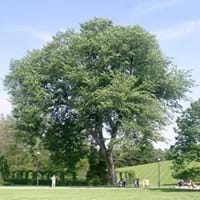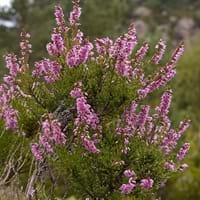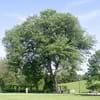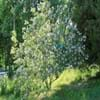Life Span
Perennial
Perennial
Origin
South-Central United States, Texas, Mexico
Europe, Morocco, Western Asia
Types
Cedars
Not Available
Habitat
River side, Woodlands
Boggy areas, Dry and Young forest Heaths, Mountain Slopes, Temperate Regions
USDA Hardiness Zone
7-9
5-8
Sunset Zone
Not Available
A1, 2a, 2b, 3a, 3b, 4, 5, 6, 15, 16, 17
Habit
Oval or Rounded
Clump-Forming
Flower Color
White, Ivory
White, Red, Pink
Flower Color Modifier
Bicolor
Not Available
Fruit Color
Red, Light Green, Tan
Not Available
Leaf Color in Spring
Green, Yellow green
Green, Gray Green, Dark Green
Leaf Color in Summer
Green, Dark Green
Green, Gray Green, Dark Green
Leaf Color in Fall
Yellow, Green, Yellow green
Green, Gray Green, Dark Green
Leaf Color in Winter
Not Available
Gray Green, Dark Green
Leaf Shape
Elliptic, toothed
Needle like
Plant Season
Spring, Summer, Fall
Spring, Summer, Fall, Winter
Sunlight
Full Sun, Partial Sun
Full Sun
Growth Rate
Medium
Medium
Type of Soil
Clay, Loam, Sand
Loam, Sand
The pH of Soil
Acidic, Neutral, Alkaline
Acidic
Soil Drainage
Well drained
Well drained
Bloom Time
Late Summer, Early Fall
Summer, Late Summer, Early Fall, Fall
Tolerances
Pollution, Drought
Not Available
Where to Plant?
Ground
Ground, Pot
How to Plant?
Seedlings, Stem Planting
Divison, Seedlings, Stem Cutting
Plant Maintenance
Medium
Low
Watering Requirements
Keep the ground moist but not water-logged, Requires a lot of watering, Requires watering in the growing season, Water Deeply
Average Water Needs
In Summer
Lots of watering
Lots of watering
In Spring
Moderate
Moderate
In Winter
Average Water
Average Water
Soil pH
Acidic, Neutral, Alkaline
Acidic
Soil Type
Clay, Loam, Sand
Loam, Sand
Soil Drainage Capacity
Well drained
Well drained
Sun Exposure
Full Sun, Partial Sun
Full Sun
Pruning
Prune to stimulate growth, Remove damaged leaves, Remove dead branches, Remove dead leaves, Remove hanging branches
Prune in early summer, Remove damaged leaves, Remove dead branches, Remove dead leaves
Fertilizers
All-Purpose Liquid Fertilizer, fertilize in growing season, Nitrogen
Ammonium Nitrate
Pests and Diseases
Bacteria wilt, Beetles, Red blotch
Armillaria mellea, Chlorosis, Crown rot, Powdery mildew, Root rot, Rust, Verticillium Wilt
Plant Tolerance
Salt, Shade areas
Drought, Dry soil, Shade areas, Wet Site
Flowers
Insignificant
Showy
Flower Petal Number
Single
Single, Double, Semi-Double
Foliage Texture
Fine
Fine
Foliage Sheen
Glossy
Matte
Attracts
Butterflies
Bees, Butterflies, Moths
Allergy
Skin rash
Not Available
Aesthetic Uses
Landscape Designing
Beautification, Bouquets, Cottage Garden, Showy Purposes
Beauty Benefits
Not Available
Skin inflammation
Environmental Uses
Air purification, Amazing growth rate, Erosion control, Food for birds, Food for insects, Nesting sites for birds, Prevent Soil Erosion
Food for animals, Food for insects
Medicinal Uses
No Medicinal Use
Arthritis, Bladder Infection, Colic, Diarrhea, Gout, Inflammation, Kidney Stones, Rheumatism, Stomach pain, Urinary tract problems
Part of Plant Used
Stem, Tree trunks
Flowers
Other Uses
Used as firewood, Used for woodware, Used in construction
Can be made into a herbal tea, Food for animals, Used for its medicinal properties
Used As Indoor Plant
No
Yes
Used As Outdoor Plant
Yes
Yes
Garden Design
Feature Plant, Shade Trees, Street Trees, Topiary / Bonsai / Espalier
Container, Cutflower, Edging, Foundation, Groundcover, Mixed Border, Rock Garden, Wall
Botanical Name
ULMUS crassifolia
CALLUNA vulgaris
Common Name
Cedar Elm
Heather, Common heather, Ling
In German
Cedar Elm
Heidekraut
In French
Cedar Elm
bruyère
In Spanish
Cedar Elm
brezo
In Greek
Cedar Elm
ερείκη
In Portuguese
Cedar Elm
urze
In Polish
Cedar Elm
wrzos
In Latin
Ulmus Cedar
Heather
Phylum
Magnoliophyta
Magnoliophyta
Class
Magnoliopsida
Magnoliopsida
Family
Ulmaceae
Ericaceae
Clade
Angiosperms, Eudicots, Rosids
Angiosperms, Asterids, Eudicots
Tribe
Not Available
Ericeae
Subfamily
Not Available
Ericoideae
Number of Species
Not Available
Not Available
Importance of Cedar Elm and Heather
Want to have the most appropriate plant for your garden? You might want to know the importance of Cedar Elm and Heather. Basically, these two plants vary in many aspects. Compare Cedar Elm and Heather as they differ in many characteristics such as their life, care, benefits, facts, etc. Every gardener must at least have the slightest clue about the plants he wants to plant in his garden. Compare their benefits, which differ in many ways like facts and uses. The medicinal use of Cedar Elm is No Medicinal Use whereas of Heather is Arthritis, Bladder Infection, Colic, Diarrhea, Gout, Inflammation, Kidney Stones, Rheumatism, Stomach pain and Urinary tract problems. Cedar Elm has beauty benefits as follows: Not Available while Heather has beauty benefits as follows: Not Available.
Compare Facts of Cedar Elm vs Heather
How to choose the best garden plant for your garden depending upon its facts? Here garden plant comparison will help you to solve this query. Compare the facts of Cedar Elm vs Heather and know which one to choose. As garden plants have benefits and other uses, allergy is also a major drawback of plants for some people. Allergic reactions of Cedar Elm are Skin rash whereas of Heather have Not Available respectively. Having a fruit bearing plant in your garden can be a plus point of your garden. Cedar Elm has no showy fruits and Heather has no showy fruits. Also Cedar Elm is not flowering and Heather is not flowering . You can compare Cedar Elm and Heather facts and facts of other plants too.





